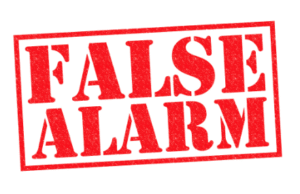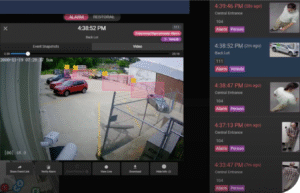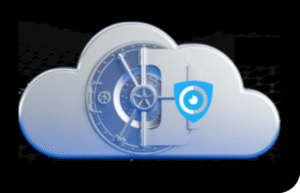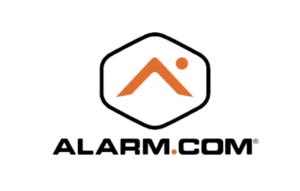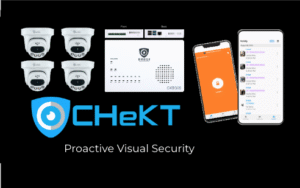CHeKT delivers real-time video access to command and alarm monitoring centers. Our focus is on providing a swift, intuitive experience for agents, with robust security and data privacy ensured by our engineering team.
Remote video monitoring is crucial for many clients. Instant live video alerts from alarm systems, combined with video analytics and AI, enhance property protection by offering agents clear situational awareness, even in low light.
Concerns about cybersecurity are valid with remote video monitoring. It’s crucial to use secure methods for remote camera access. Our Proactive Visual Security platform prioritizes cybersecurity, encrypting all communications between the protected site and monitoring center to safeguard against risks.
Port-Forwarding & DDNS
For many security companies, the battle between protecting a client’s network and providing interactive video services is an internal struggle of convenience vs security. Unfortunately, in many situations, the choice comes down to convenience, both for the dealer and the customer.
Port-forwarding video systems can jeopardize network security, but many installers see it as the only option for remote access. With CHeKT, however, you can eliminate the risks of port-forwarding while still providing secure remote video monitoring.
What is Port Forwarding?
Port-forwarding allows external access to internal video devices, posing significant security risks. This method shifts network security from the firewall to the video device, which is not equipped to handle cyber threats and is prone to compromise.
Is DDNS a Better Option?
Dynamic Domain Name Services (DDNS) simplifies access to port-forwarded devices by providing an easy-to-remember name instead of an IP address. However, it doesn’t enhance security and may even increase vulnerability due to the ease of access.
Does CHeKT Use Port Forwarding or DDNS?
No, CHeKT eliminates the need for port-forwarding and DDNS. Our solution secures remote video monitoring by removing all port-forward rules and DDNS names, offering a safer alternative that doesn’t require static IP addresses.
P2P & Cloud Relay Services
Some camera brands will use an onboard Peer-to-Peer (P2P) or cloud relay service to enable remote access to their video devices. Utilizing a manufacturer’s P2P service has the potential of being more secure than port forwarding devices. When using a manufacturer’s P2P or Relay services, it’s important to know if their development and software services have a reputation of integrity and trustworthiness.
P2P and Relay connections are managed by a remote cloud of the manufacturer and are not typically regulated. With P2P solutions, the security of the customer’s network is impacted by the quality and integration of the P2P or Relay service.
Things to consider when evaluating a company’s P2P or Relay technology.
- Does the company have a history of cyber incidents?
- Is the manufacturer trusted by third-party cyber security experts?
- Does the manufacturer routinely test and patch for newly discovered software vulnerabilities?
- Are the cloud services compliant with government regulations, like GDPR?
- In what country are the cloud servers located?
How Does Peer-to-Peer (P2P) Work?
P2P establishes a direct connection between two devices, such as a camera and a remote viewer. The connection is initiated by the camera, creating a secure device-to-device link that’s less prone to compromise. Managed by the manufacturer’s cloud servers, the connection details are communicated through a “pin-hole” method, where the camera reveals its port and address to the cloud. Once established, the devices communicate directly without further cloud involvement.
What is a Cloud Relay Connection?
Cloud Relay works similarly to P2P but maintains the connection through the manufacturer’s cloud infrastructure. The cloud handles and relays all communications between the remote user and the video device.
Is P2P or Cloud Relay More Secure?
Both P2P and Cloud Relay offer a balance of convenience and security but have associated risks. Poorly developed systems or untrustworthy companies can compromise security.
P2P: Security relies on the device’s integrity and cloud infrastructure. Issues include discoverable connection details, potential for weak passwords, and unencrypted video streams.
Cloud Relay: Security is managed centrally in the cloud, allowing for stronger passwords and enhanced measures. This method supports encrypted video streams and centralized control over access and security.
Does CHeKT Use P2P or Relay Services?
CHeKT uses Cloud Relay, creating a secure, encrypted TLS connection between CHeKT Video Bridges and the CHeKT Cloud for communication. This method ensures encrypted video and secure authentication. Central management in the
CHeKT cloud allows for easy modification of access and password security. CHeKT also encrypts all video streams and offers a patented privacy mode feature, which limits monitoring agent access while providing services. CHeKT’s solution operates through Amazon AWS and is GDPR compliant, enhancing overall security.
VPN Services
Using a VPN for Video Transmission
A VPN (Virtual Private Network) is highly secure for transmitting video between locations but can be complex and restrictive to deploy. It requires dedicated hardware or internal machines on both ends, often demanding significant technical expertise and additional equipment for multiple users.
Some manufacturers offer specialized boxes or servers for easier VPN setup, though they usually come with extra costs. These solutions provide top-notch security for the customer’s network.
Does CHeKT Use a VPN?
CHeKT does not use a traditional VPN. Instead, CHeKT employs an encrypted TLS protocol to establish secure communication channels through its Video Control Panels. This method ensures encrypted access to video devices without the need for VPN infrastructure.

